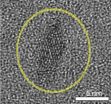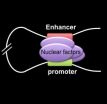(Press-News.org) Berlin, Germany, June 7 2012: Data from one of the few head-to-head trials in rheumatoid arthritis (RA) presented today at EULAR 2012, the Annual Congress of the European League Against Rheumatism, demonstrates that at one year, 64.8% of patients receiving abatacept (Orencia) and 63.4% of patients receiving adalimumab (Humira) achieved ACR20*.
The Phase IIIb AMPLE study (Abatacept Versus Adalimumab Comparison in Biologic-Naive RA Subjects with Background Methotrexate) was carried out in 646 biologic-naïve patients with active RA and inadequate response to methotrexate. At four weeks, 42.5% of patients in the abatacept group achieved ACR20 response versus 47.6% in the adalimumab group. This remained comparable until the end of year one. At 12 months, ACR50* response was similar between the two groups (46.2% in the abatacept group and 46% in the adalimumab group). ACR70* response was 29.2% versus 26.2% in the abatacept group and adalimumab groups respectively. These data show the similar time course of response. Inhibition of radiographic progression was also similar in both arms.
"There have been very few head-to-head trials in rheumatoid arthritis and, to date, there have been no randomised, controlled studies directly comparing the safety and efficacy of different biologic disease-modifying anti-rheumatic drugs (DMARDs) using the combination of a biologic medication and methotrexate which is the most commonly prescribed treatment approach in moderate to severe RA," said Dr. Michael Schiff, University of Colorado, USA and lead author of the study. "This study is a great leap forward for us and our patients as it shows there is another treatment option that is as effective and as safe as adalimumab."
The AMPLE study is a randomised, investigator-blinded study of 24 months, with a 12 month efficacy primary endpoint. Patients were stratified by disease activity and randomised to either 125mg subcutaneous abatacept (without an IV load) weekly or 40mg subcutaneous adalimumab bi-weekly, in combination with a stable dose of methotrexate. The primary endpoint of the trial was non-inferiority by ACR20 response at 12 months with a non-inferiority margin of 12%.
There was a similar rate of adverse events, serious adverse events, serious infections and malignancies in both groups.
More patients in the abatacept arm experienced autoimmune adverse events (3.1% versus 1.2%), but none were considered to be serious. There were also fewer discontinuations due to adverse events (2.5% versus 6.1%) and serious infections (0 versus 5 discontinuations) in the abatacept arm. Injection site reactions also occurred in fewer abatacept patients (3.8% versus 9.1%, 95% confidence interval: -5.37 (-9.13, -1.62) p=0.006).
Abatacept (Orencia), which is produced by Bristol-Myers Squibb, is a first-in-class biologic which works to reduce co-stimulation of T-cells, which in turn reduces activation of other cells in the RA inflammatory process, thereby blocking the pain, inflammation and joint progression pathways in RA.
Adalimumab (Humira) is produced by Abbott and is a biologic TNF-blocker, or anti-TNF. Adalimumab works by binding to TNF-alpha receptors, thereby blocking the pain, inflammation and joint progression pathways in RA.
###
Abstract Number: OP0022
*ACR (American College of Rheumatology) criteria measures improvement in tender or swollen joint counts and improvement in three of the following five parameters: acute phase reactant (such as sedimentation rate), patient assessment, physician assessment, pain scale and disability/functional questionnaire. ACR20 refers to a 20% improvement in tender/swollen joint counts, as well as three of the five other criteria. ACR50 refers to a 50% improvement and ACR70 refers to a 70% improvement.
NOTES TO EDITORS:
For further information on this study, or to request an interview with the study lead, please do not hesitate to contact the EULAR congress Press Office in Hall 6 on the 3rd floor of the Congress Centre during EULAR 2012 or on:
Email: eularpressoffice@cohnwolfe.com
Candice Debleu:
Onsite tel: +44 7894 386 425
About EULAR
The European League Against Rheumatism (EULAR) is the organisation which represents the patient, health professional and scientific societies of rheumatology of all the European nations
In line with The European Union of Medical Specialists (UEMS), EULAR defines rheumatology as including rheumatic diseases of the connective tissue, locomotor and musculoskeletal systems
EULAR aims to promote, stimulate and support the research, prevention, treatment and rehabilitation of rheumatic diseases. With 45 scientific member societies, 36 PARE organisations and 10 health professionals associations, EULAR underscores the importance of combating rheumatic diseases not only by medical means, but also through a wider context of care for rheumatic patients and a thorough understanding of their social and other needs
Diseases of the bone and joints such as rheumatoid arthritis and osteoarthritis cause disability in 4-5% of the adult population and are predicted to rise as people live longer
EULAR 2012 is set to be the biggest rheumatology event in Europe with over 15,000 scientists, physicians, allied health professionals, and related audiences in attendance from over 115 countries. Over the course of the congress, more than 275 oral and 1400 poster abstract presentations will be featured, with 1,010 invited speaker lectures taking place in 190 sessions
To find out more about the activities of EULAR, visit: www.eular.org
Head-to-head study in RA shows that abatacept has comparable efficacy to adalimumab
Safety of treatments was similar with fewer injection site reactions observed with abatacept
2012-06-08
ELSE PRESS RELEASES FROM THIS DATE:
Experts call for strong regulation and peer review of military and civilian nuclear programs
2012-06-08
All nuclear energy and weapons programs should be independently regulated and subject to rigorous peer review, according to three experts on nuclear policy. Their comments and recommendations are published in an article entitled, "A Safer Nuclear Enterprise," in the June 8 issue of the journal Science.
The authors noted that, despite international diplomatic efforts to prevent the proliferation of nuclear weapons and ensure that nuclear material is protected against theft, there is growing apprehension about terrorists acquiring weapons or nuclear material.
"There is ...
CheapCarInsurance.net Explains Why You Should Purchase Rental Car Insurance
2012-06-08
When you are planning a vacation or a trip and you need to rent a car, one of the most important things that you should consider is whether or not you need to buy rental car insurance. When you search for a car rental company online or in person, most salespeople will tell you that you need insurance, while most web pages will tell you that you do not need it. This couldn't be further from the truth. In reality, purchasing rental car insurance for a few extra dollars per day may be one of the most intelligent things that a person can do for themselves.
CheapCarInsurance.net ...
CU-Boulder physicists use ultrafast lasers to create first tabletop X-ray device
2012-06-08
An international research team led by the University of Colorado Boulder has generated the first laser-like beams of X-rays from a tabletop device, paving the way for major advances in many fields including medicine, biology and nanotechnology development.
For half a century, scientists have been trying to figure out how to build a cost-effective and reasonably sized X-ray laser that could, among other things, provide super-high-resolution imaging, according to Henry Kapteyn, a CU-Boulder physics professor and fellow at JILA, a joint institute of CU-Boulder and the National ...
New brain target for appetite control identified
2012-06-08
New York, NY (June 7, 2012) — Researchers at Columbia University Medical Center (CUMC) have identified a brain receptor that appears to play a central role in regulating appetite. The findings, published today in the online edition of Cell, could lead to new drugs for preventing or treating obesity.
"We've identified a receptor that is intimately involved in regulating food intake," said study leader Domenico Accili, MD, professor of Medicine at CUMC. "What is especially encouraging is that this receptor is belongs to a class of receptors that turn out to be good targets ...
New twist on old chemical process could boost energy efficiency
2012-06-08
Chemical reactions on the surface of metal oxides, such as titanium dioxide and zinc oxide, are important for applications such as solar cells that convert the sun's energy to electricity. Now University of Washington scientists have found that a previously unappreciated aspect of those reactions could be key in developing more efficient energy systems.
Such systems could include, for example, solar cells that would produce more electricity from the sun's rays, or hydrogen fuel cells efficient enough for use in automobiles, said James Mayer, a UW chemistry professor.
"As ...
Parasitic plants 'steal' genes from their hosts
2012-06-08
New research published today in BioMed Central's open access journal BMC Genomics reveals that the Malaysian parasitic plant Rafflesia cantleyi, with its 50cm diameter flowers, has 'stolen' genes from its host Tetrastigma rafflesiae. Analysis of these genes shows that their functions range from respiration to metabolism, and that some of them have even replaced the parasites own gene activity.
Vertical gene transfer is that between parents and their offspring, while horizontal gene transfer is the movement of genes between two different organisms. Bacteria use horizontal ...
Engineered robot interacts with live fish
2012-06-08
A bioinspired robot has provided the first experimental evidence that live zebrafish can be influenced by engineered robots.
Results published today, 8 June, in IOP Publishing's journal Bioinspiration and Biomimetics, provide a stepping stone on the path to using autonomous robots in an open environment to monitor and control fish behaviour.
In the future, water-based robots could potentially contribute to the protection of endangered animals and the control of pest species.
The robot, created by researchers from Polytechnic Institute of New York University and ...
Manipulating chromatin loops to regulate genes may offer future treatments for blood diseases
2012-06-08
In exploring how proteins interact with crucial DNA sequences to regulate gene activity, researchers have shed light on key biological events that may eventually be manipulated to provide new disease treatments.
Within a cell's nucleus, regulatory elements in DNA called promoters and enhancers communicate with each other in carrying out gene activity, often over large genomic distances, hundreds of thousands of chemical bases apart from each other in chromosomes. As these elements physically contact each other, the intervening DNA sequences bend into loops made of chromatin ...
Immune system 'circuitry' that kills malaria in mosquitoes identified
2012-06-08
Researchers at the Johns Hopkins Malaria Research Institute have, for the first time, determined the function of a series proteins within the mosquito that transduce a signal that enables the mosquito to fight off infection from the parasite that causes malaria in humans. Together, these proteins are known as immune deficiency (Imd) pathway signal transducing factors, are analogous to an electrical circuit. As each factor is switched on or off it triggers or inhibits the next, finally leading to the launch of an immune response against the malaria parasite. The study was ...
Pre-existing problems
2012-06-08
In a critical step that may lead to more effective HIV treatments, Harvard scientists have found that, in a small number of HIV patients, pre-existing mutations in the virus can cause it to develop resistance to the drugs used to slow the progression of the disease.
The finding is particularly important because, while researchers have long known HIV can develop resistance to some drugs, it wasn't understood whether the virus relied on pre-existing mutations to develop the resistance, or if it has to wait for those mutations to occur. By shedding new light on how resistance ...
LAST 30 PRESS RELEASES:
Numbers in our sights affect how we perceive space
SIMJ announces global collaborative book project in commemoration of its 75th anniversary
Air pollution exposure and birth weight
Obstructive sleep apnea risk and mental health conditions among older adults
How talking slows eye movements behind the wheel
The Ceramic Society of Japan’s Oxoate Ceramics Research Association launches new international book project
Heart-brain connection: international study reveals the role of the vagus nerve in keeping the heart young
Researchers identify Rb1 as a predictive biomarker for a new therapeutic strategy in some breast cancers
Survey reveals ethical gaps slowing AI adoption in pediatric surgery
Stimulant ADHD medications work differently than thought
AI overestimates how smart people are, according to HSE economists
HSE researchers create genome-wide map of quadruplexes
Scientists boost cell "powerhouses" to burn more calories
Automatic label checking: The missing step in making reliable medical AI
Low daily alcohol intake linked to 50% heightened mouth cancer risk in India
American Meteorological Society announces Rick Spinrad as 2026 President-Elect
Biomass-based carbon capture spotlighted in newly released global climate webinar recording
Illuminating invisible nano pollutants: advanced bioimaging tracks the full journey of emerging nanoscale contaminants in living systems
How does age affect recovery from spinal cord injury?
Novel AI tool offers prognosis for patients with head and neck cancer
Fathers’ microplastic exposure tied to their children’s metabolic problems
Research validates laboratory model for studying high-grade serous ovarian cancer
SIR 2026 delivers transformative breakthroughs in minimally invasive medicine to improve patient care
Stem Cell Reports most downloaded papers of 2025 highlight the breadth and impact of stem cell research
Oxford-led study estimates NHS spends around 3% of its primary and secondary care budget on the health impacts of heat and cold in England
A researcher’s long quest leads to a smart composite breakthrough
Urban wild bees act as “microbial sensors” of city health.
New study finds where you live affects recovery after a hip fracture
Forecasting the impact of fully automated vehicle adoption on US road traffic injuries
Alcohol-related hospitalizations from 2016 to 2022
[Press-News.org] Head-to-head study in RA shows that abatacept has comparable efficacy to adalimumabSafety of treatments was similar with fewer injection site reactions observed with abatacept



